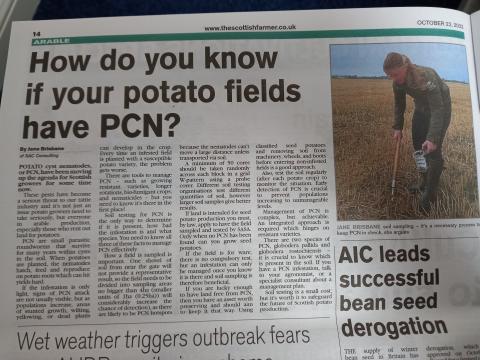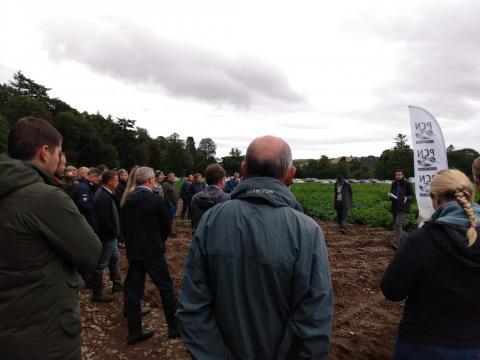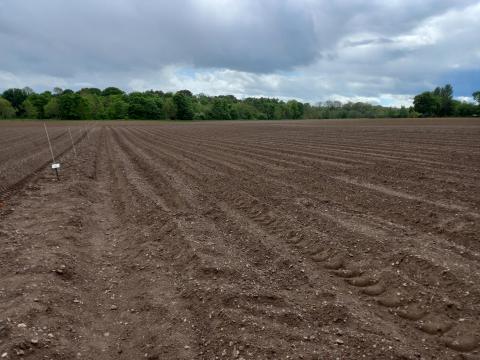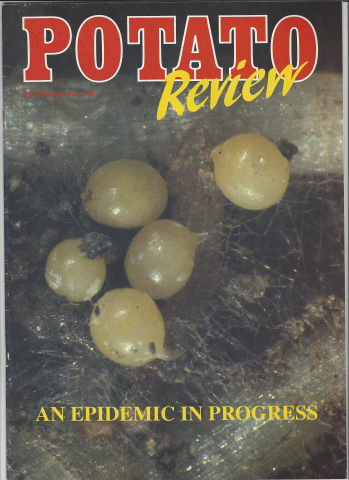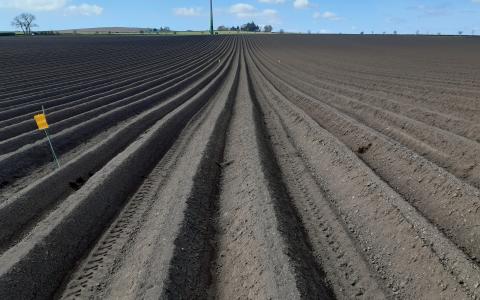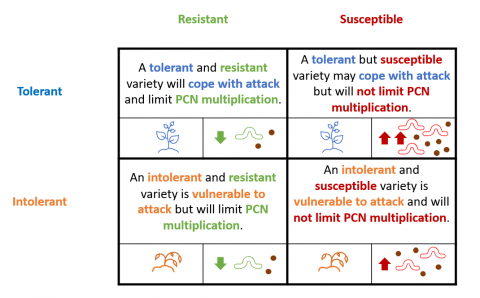Blog
Project work in the spotlight
Some of the results and information presented at the PCN conference have found their way into newspapers and onto the radio. Steven Thomson, who is leading the Economics work package, indicated that the potato industry undervalues itself when talking about its contribution to the economy. In these articles he explains why -
Potato sector accused of 'selling itself short' - Farmers Weekly (fwi.co.uk)
Soil sampling for PCN
I spent some time recently writing an article for the Scottish Farmer about soil sampling for PCN. Soil sampling for PCN is important, it is the only way to find out how much PCN is in your fields and what species. Sampling technique is important, a smaller area and more cores taken resulting in a bigger quantity of soil tested will increase the accuracy of results. Now (autumn) is a good time to sample fields for PCN, especially if you have just lifted potatoes. Why? Because there is time to plan the rotation.
PCN Action Scotland in action
Potatoes in Practice last week followed by the PCN Open Day yesterday means most, if not all, the project members have been pretty busy lately! Both events could be deemed a success with lots of interest in the project at PiP and a great attendance at the open day. At PiP, we had a plot demonstrating 8 Globodera pallida resistant varieties. This was a good talking point because resistant varieties are a powerful tool for controlling PCN, especially if used as part of an integrated pest management approach.
Plots planted and approaching emergence.
The PCN variety demonstration plots have been planted and are approaching emergence. The main trial consists of several different varieties and we will be assessing how they grow in field as well as testing the soil to determine the PCN population before (Pi) and after (Pf) potatoes. There are also smaller observation plots and trap crop trials at the site. Planning an open day is currently underway - watch this space!
Some PCN history.
Pictured on the left is the front cover of a 1996 edition of Potato Review in which David Trudgill and Mark Phillips wrote an article titled 'The White PCN: An Epidemic in Progress'. They are referring to Globodera pallida which is becoming (if it hasn't already) the most dominant PCN species across the UK.
PCN tolerance... again!
The image above shows what has been going recently (more to follow in my next post) but in other news, I asked a potato agronomist about the tolerance of different varieties to PCN. I was kindly pointed in the direction of some research papers produced by AHDB Potatoes in which varieties such as Cara, Maris Peer and Markies were assessed, along with those that have resistance to G. pallida (Arsenal, Eurostar, Innovator etc.).
PCN tolerance vs resistance
An article in the April 2022 SACAPP Potato Bulletin discussed PCN tolerance versus resistance and included the diagram below which shows the 4 possible combinations of these two characteristics. In the real world, a variety might sit between these 4 categories. Tolerance is the ability of a potato variety to maintain yield despite the presence of PCN while resistance is the ability of a variety to limit PCN multiplication. They are often confused as being the same trait but they are different.


